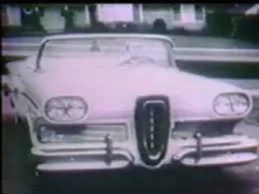The Gates Convertible Coupe
/AACA Facebook page/BobCunningham
The late 1940s was the start of the Jet Age. Any connection a car could make to jet airplanes would be a big selling point. The Gates Convertible Coupe was built in Dayton, Ohio. While it wasn’t made of the exotic materials of the day like aluminum or fiberglass, it did look a bit like a wingless airplane - or maybe an airplane-less wing. Either way, since it used the same 22hp Austin engine found in the tiny American Bantam, the Gates might have had trouble achieving takeoff velocity. Not much is known about what else lay beneath the futuristic-looking skin, except supposedly it had a set of hydraulic jacks that promised to raise one or all wheels at the touch of a button. Gates produced but one car, and it did not survive time.










